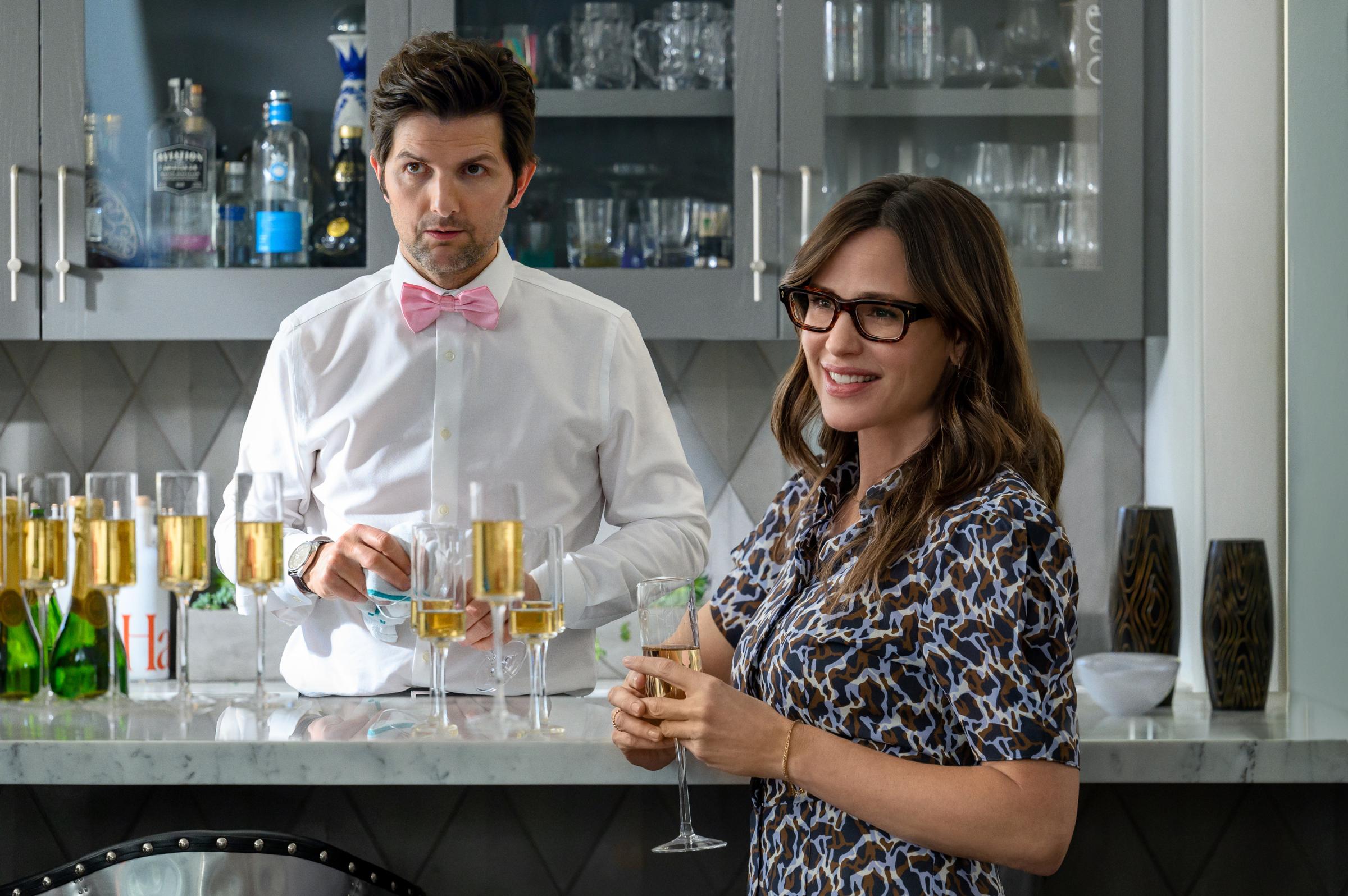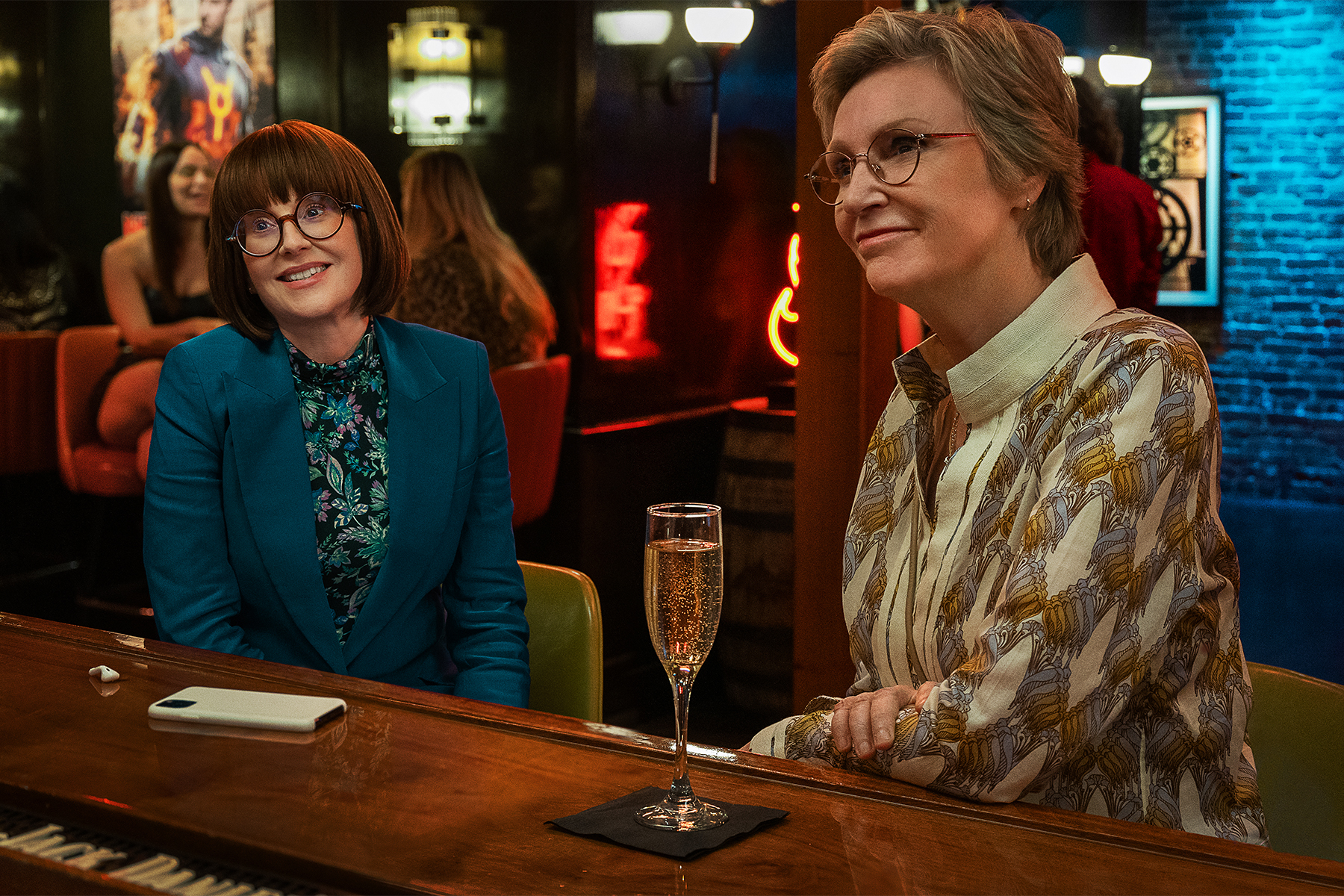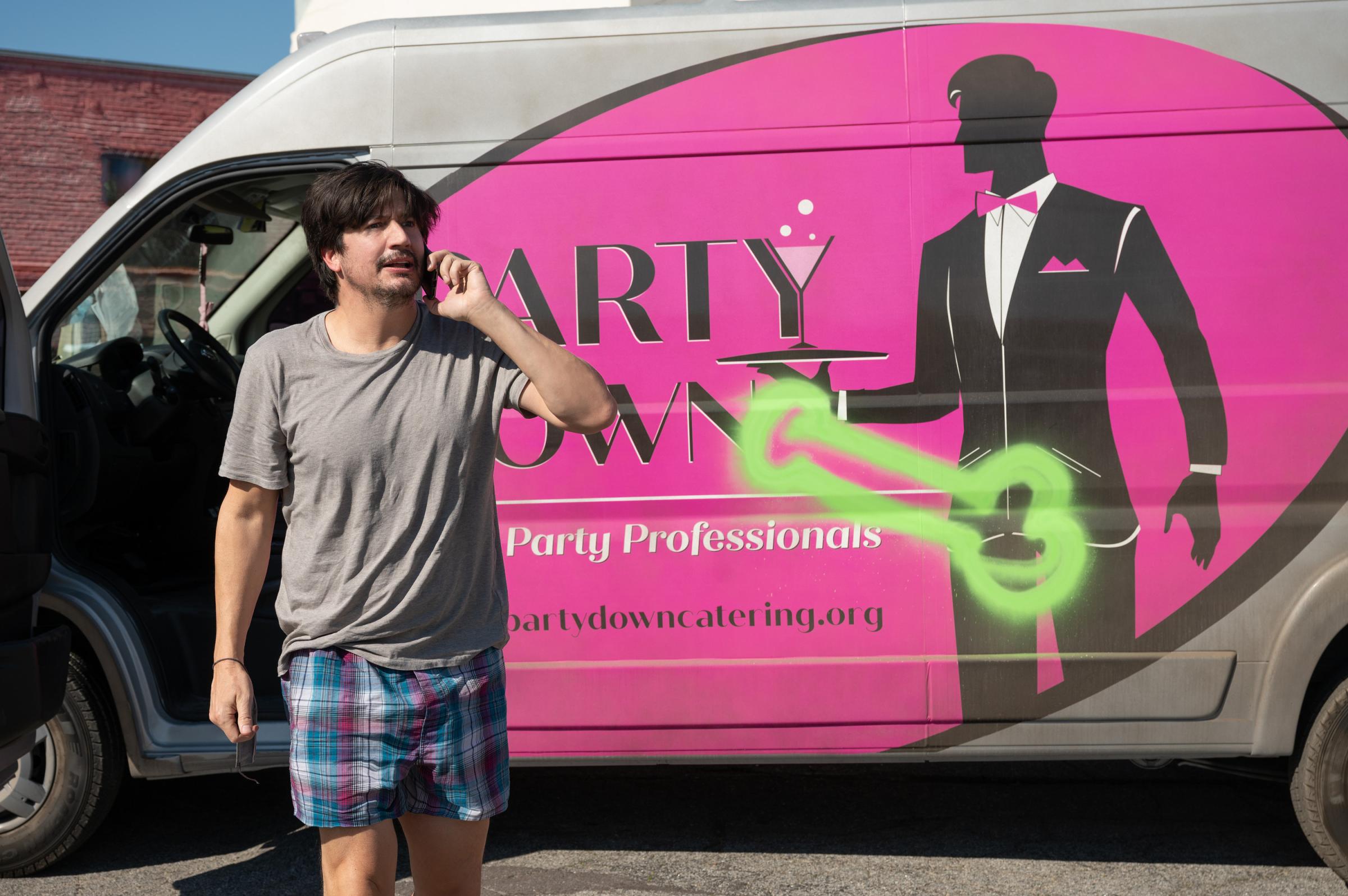There’s no such thing as perfection, but Party Down got pretty damn close. Created by Veronica Mars mastermind Rob Thomas, John Enbom, Dan Etheridge, and Paul Rudd, the 2009 Starz comedy about a motley team of cater waiters produced just 20 episodes in its initial run—but every single one, each set at a different catered event in Los Angeles, was a winner. The show struck an ideal balance between witty dialogue and unhinged slapstick; rom-com sexual tension, Hollywood satire, and gross-out gags; episodic plots tailored to famous guest stars and slow-burning arcs that took advantage of an all-time great cast. The only problem was that not enough people heeded critics’ pleas to watch, so Party Down got axed after its second season.
Happily, in the 13 years since we last checked in with the pink-bowtie-adorned staff of Party Down Catering, scads of viewers have discovered the show. (If you aren’t one of them, I suggest you stop reading this review immediately and don’t come back until you’ve remedied that.) An ensemble led by Adam Scott and Ken Marino has ascended to marquee status. And just about every TV series over a decade old that still has name recognition is being revived. So, of course, on Feb. 24, we’re getting more Party Down. Don’t worry: season 3 is great. By which I mean that most of the five (out of six total) episodes I screened had me laughing so hard that I gasped for air and tears streamed down my face and I very nearly fell off the couch.

I mean, was there ever any doubt that when you put Scott, Marino, Jane Lynch, Megan Mullally, Martin Starr, and Ryan Hansen back in a room—preferably a cramped kitchen—together, humor would ensue? The creators simply had to clear a few narrative hurdles to make the new season work. For one thing, there’s a lot of turnover in catering; it’s a rare waiter who stays with a crew for upwards of a decade, especially in L.A., where gig-based service jobs tend to function as decently paid purgatories for Hollywood hopefuls waiting for their big breaks. So it makes sense that when we rejoin the team, only prickly hard-sci-fi author Roman DeBeers (Starr) and his boss, the sweaty, catastrophe-prone striver Ron Donald (Marino), are on the Party Down payroll. Having finally landed a superhero role, Hansen’s dim Kyle Bradway has hired them to cater a celebration. (Getting to rub his success in Roman’s face is a bonus.) Among the guests are his old co-workers Lydia Dunfree (Mullally), now a fearsome momager with an Anna Wintour bob; Constance Carmell (Lynch), the faded B-movie bombshell turned widowed heiress; and Scott’s perennially ambivalent Henry, who remains most famous for shouting “Are we having fun yet?” in a 20-year-old TV ad.
Which brings us to the second hurdle. Lizzy Caplan, who played Henry’s sometime-girlfriend Casey Klein in the original seasons, had to skip the reunion due to schedule conflicts. It couldn’t have been hard to write her out of the story. As Roman explains, “Casey made it big doing quips and zingers on some dumb show for boomer fascists”—i.e., she scored a spot on SNL. But Caplan, as one half of a high-chemistry pairing that gave the show its emotional stakes, was a linchpin of Party Down. Jennifer Garner, who joins the cast as Henry’s new love interest Evie, a studio executive with a bro-ish actor husband played by James Marsden, can be a truly funny foil for Scott. (They’re spectacular in a mushroom-fueled panic midway through the season.) The characters’ relationship just doesn’t have the same tension or urgency as Henry and Casey’s, which was fueled by her ascendance in and his abandonment of the entertainment industry.

It takes some maneuvering to get most of the original team back in uniform and set up Henry’s new love life. There are also a few new characters to introduce. Brockmire star and Disney alum Tyrel Jackson Williams is Sackson, a young content creator moonlighting as a caterer; bless him and the show’s directors for realizing the character should be underplayed, rather than giving us yet another obnoxious Gen Z influencer type. And Zoë Chao, who was so wonderful in The Afterparty, joins as a pretentious chef whose idea of creative cuisine is serving people lumps of paper pulp with unidentified spiky things sticking out of them. “Everyone is so stuck on this idea of food being good,” she complains. “Food is art.” If the exposition weighs down the first two episodes a bit, both characters ultimately make solid additions.
Season 3 hits its stride when Party Down gets back to doing what it does best: dreaming up wild gatherings and plopping down its neurotic characters in the center of them. There’s a meeting of self-styled right-wing intellectuals, which casts Nick Offerman as a Steve Bannon type who refuses to stop complimenting Hitler. A VIP pre-party for a Sting concert devolves into the weirdest luau ever. While some of his castmates have become bigger names, Marino is TV’s reigning king of physical comedy, and he remains the show’s MVP in these episodes. Ron lives in a constant state of desperation, willing to grovel, lie, beg for money, live in the Party Down van, and subject himself to physical pain of every variety—all of which he does this season—in his quest to become a successful businessman. That means the actor has to commit just as hard as the character. If Marino’s performance in episode 5 doesn’t make you howl until you can’t see straight, check your pulse, because you might be medically dead.

Looking back from the distance of 13 years, it’s clearer than ever that Party Down has had an outsized impact on TV comedy. Scott graduated to similarly passive, wounded roles on Parks and Recreation and Severance. Lynch, now a five-time Emmy winner, broke out on Glee. Starr’s Silicon Valley character was Roman as a coder, just as Marino’s role on The Other Two has Ron Donald’s neediness. The show also primed audiences for a generation of comedy series that wring humor out of unglamorous aspects of the entertainment industry: Barry, Call My Agent!, BoJack Horseman, Flack, I Hate Suzie, Better Things, Difficult People, The Other Two again.
But its appeal isn’t limited to a particular moment on the TV timeline or in any actor’s career. If Cheers had infinite storytelling potential because anyone with any agenda or problem or backstory could walk into a bar filled with funny characters, then Party Down has infinite storytelling potential because its funny characters can walk into any kind of gathering without knowing in advance whether they’re going to encounter casting directors or neo-Nazis. It was an ingenious premise in 2009, and it’s an ingenious premise in 2023. My only real complaint about the new season is that, just like the original series, Starz didn’t make nearly enough of it.
More Must-Reads from TIME
- Caitlin Clark Is TIME's 2024 Athlete of the Year
- Where Trump 2.0 Will Differ From 1.0
- Is Intermittent Fasting Good or Bad for You?
- The 100 Must-Read Books of 2024
- Column: If Optimism Feels Ridiculous Now, Try Hope
- The Future of Climate Action Is Trade Policy
- FX’s Say Nothing Is the Must-Watch Political Thriller of 2024
- Merle Bombardieri Is Helping People Make the Baby Decision
Contact us at letters@time.com